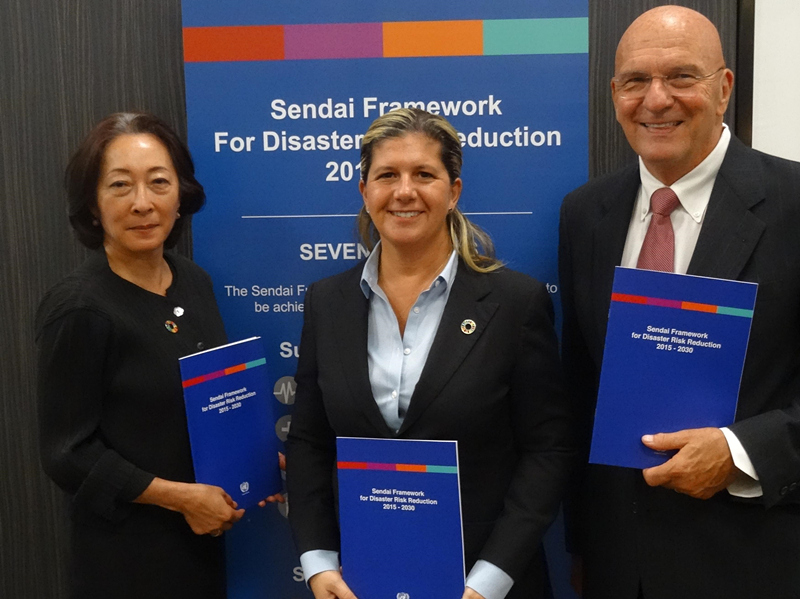
ARISE co-chair and UNDRR chief, Mami Mizutori, ARISE vice-chair, Martha Herrera González, ARISE co-chair, Dale Sands
GENEVA, 30 January 2020 – Destruction of buildings is behind much of the death, injury and economic loss incurred in disaster events, according to a new initiative launched today to motivate the owners and operators of industrial and commercial buildings to improve how they anticipate and manage disaster risk.
“Major disaster events have doubled over the last forty years and natural hazard impact is exacerbated when infrastructure fails. This is most obvious in earthquakes and tsunamis but is also the case in floods and storms. The failure to factor disaster resilience into construction and maintenance of buildings has to be addressed as urbanization progresses at lightning speed around the globe,” said Mami Mizutori, the UN Secretary-General’s Special Representative for Disaster Risk Reduction.
Ms. Mizutori was speaking today on the release of a Disaster Resilience Scorecard for Industrial and Commercial Buildings, developed by ARISE, the Private Sector Alliance for Disaster Resilient Societies - a global network led by the UN Office for Disaster Risk Reduction (UNDRR). ARISE members closely involved in its development include the Institute for Building Technology and Safety, US Green Building Council, Jacobs Engineering, Global Infrastructure Basel, the architecture firm SOM, Jones Lang Lasalle and others.
“The main goal of the scorecard is to provoke thought and action about the disaster resilience of buildings, particularly those located in seismic zones, exposed coastal settings or on flood plains,” said Dale Sands, the co-chair of ARISE.
The ARISE Building Scorecard is structured around the “Ten Essentials for Disaster Risk Reduction” which promote risk governance and have helped to attract over 4,000 cities and towns to join UNDRR’s Making Cities Resilient Campaign.
“The scorecard goes beyond assessing the structural resilience of the building. The building and the city in which it is located share the same risks and a building’s exposure to disaster will be affected by policy and decisions taken by the local government or municipal authorities, “Mr. Sands said.
In addition to highlighting any shortcomings with the disaster preparedness of the building and the community dependent on it, the ARISE Building Scorecard seeks to highlight issues beyond the immediate control of the building owner or management such as road access, water and energy supplies – to provide building owners and managers with their “resilience agendas” for when they hold discussions with the city-planners and investors.